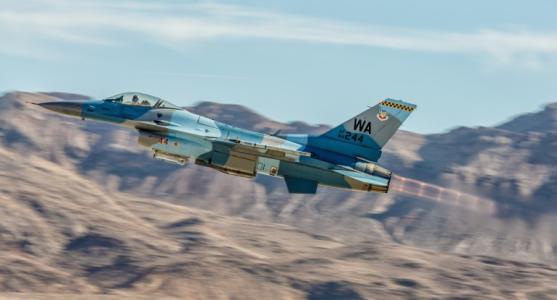 For good and for ill, fighting from the air has been perhaps the defining aspect of America’s warmaking. We invented “precision” daylight bombing against Germany in WWII. We pioneered firebombing and nuclear bombing against Japan in that same conflict. We developed laser-guided munitions for use against high-priority targets while fighting North Vietnam, and even more precise GPS-guided munitions for our 21st century wars.
For good and for ill, fighting from the air has been perhaps the defining aspect of America’s warmaking. We invented “precision” daylight bombing against Germany in WWII. We pioneered firebombing and nuclear bombing against Japan in that same conflict. We developed laser-guided munitions for use against high-priority targets while fighting North Vietnam, and even more precise GPS-guided munitions for our 21st century wars.
We build the best bombers, the best fighters, and the smartest bombs. We invented stealth so that “America, f*** yeah!” you won’t even see us coming.
Our pilots are perhaps the best trained in the world, and even if our Air Force has become too small for today’s needs, it’s still the biggest and by far the most powerful in the world.
And don’t even get me started on drones. Big drones give Air Force colonels capabilities once reserved to jillion-dollar spy satellites, and tiny drones turn a muddy-boot Army grunt into an aerial reconnaissance asset. Even cooler, a president sorting through “assassination cards” in the Oval Office can have his order relayed to a drone pilot in Nevada who gives a command via satellite to an armed drone over Syria — and then a few seconds later a Hellfire missile sends a jihadi commander to Paradise.
We’re really, really good at this stuff.
While air power may have never won a war*, not having enough air power is a dandy way to lose one — just ask any German who found themselves “de-housed” in the final year of WWII.
With all that in mind, riddle me this:
Vice Chairman of the U.S. Joint Chiefs of Staff Paul Selva admitted Wednesday that 40 percent of U.S. airstrikes fail to strike “dynamic targets” in the fight against the Islamic State (IS).“It depends on which day and which targets that we’re talking about, but roughly 40 percent come back every day not having struck dynamic targets, with weapons still aboard,” Selva said in a Senate testimony on U.S. strategy against IS.
There’s an old Army armor saying, “What you can see you can hit and what you can hit you can kill.” But in between the first “hit” and the “and,” somebody has actually got to fire a dang weapon, rather than slinking back to base still with a full weapons load.
“Ah, well, maybe they just couldn’t find any targets,” you might fairly say. Fine, but that’s not what Air Force pilots have been saying for months now. Administration interference in the air campaign is approaching Legendary status.
And yet even with all that, there’s still this:
The United States Air Force, which has launched over 20,000 missiles and bombs since the start of the bombing missions against ISIS over a year ago, revealed that its munitions stockpiles are now depleted.The U.S. Air Force is now calling for a ramp-up for the funding and production of weapons, as it is using up munitions faster that they are being replenished.
“This is a critical need,” said Gen. Mark Welsh, the chief of staff of the U.S. Air Force, as B-1 bomber aircraft drop a record number of bombs and F-15E fighter jets use up a variety of weapons.
And what have we gotten in exchange for running our stocks down to the level of “critical need” in a bombing campaign run by a president who once called ISIS the “jayvee squad”? What we’ve gotten is an ISIS threat which even a former administration official admits is “still growing.”
The world’s most powerful Air Force isn’t allowed to drop bombs which it’s somehow still running out of, against an enemy the White House can barely admit even exists.
This is no way to run an air war.
Source: PJMedia
